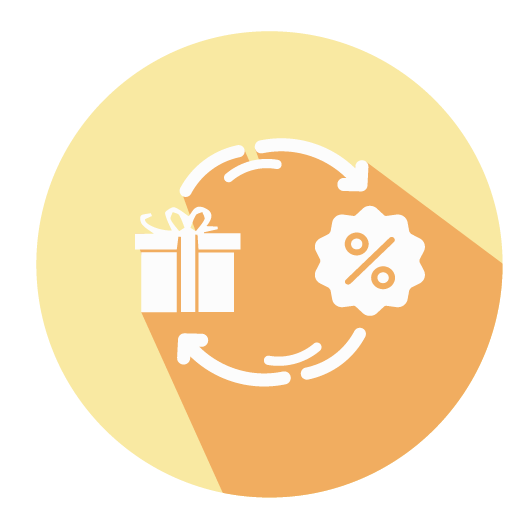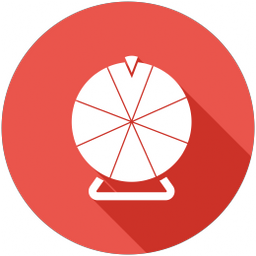The Secret of Effective QR Code Call to Actions
Relevant topics Archive, Advertising
Imagine that you are on the bus, on your way to work. You’re bored, waiting to arrive at your destination. When you look up, your eyes fall on several ads placed on the bus. They include texts and logos and are screaming for your attention. You see one that includes a QR code. Now think of this - what would make you want to grab your phone and scan the QR code?
There could be several reasons. However, think of this subject from a marketer’s perspective. How can you make people scan your QR code and draw them to your online environment? And accordingly, make them interact with your website? Let’s find out!
Imagine that you are on the bus, on your way to work. You’re bored, waiting to arrive at your destination. When you look up, your eyes fall on several ads placed on the bus. They include texts and logos and are screaming for your attention. You see one that includes a QR code. Now think of this - what would make you want to grab your phone and scan the QR code?
There could be several reasons. However, think of this subject from a marketer’s perspective. How can you make people scan your QR code and draw them to your online environment? And accordingly, make them interact with your website? Let’s find out!
QR codes are everywhere. At bus stops, train stations, in buses or trains, magazines and on posters. They are used to draw people from offline to online environments. After scanning the code, people access an online platform. They can navigate on the page and possibly register for a deal, newsletter, or purchase. This is a three-step interaction process.
Chinese researchers conducted a field study to identify the best circumstances for outdoor ads. They reported some interesting findings which can help improve your campaign and promote your deal!

Frame your slogan positively
Firstly, make sure you frame your slogan or call to action positively in your outdoor advertising campaign. For example, accompanying your QR code, write ‘Scan to win a prize’. This is more likely to make people interact with your ad than negative framing, such as ‘Scan or regret’. While negative framing has been found to be very effective in many different persuasion areas, QR code activation is not one of them. Why so? Well, it can make your audience feel like they are missing out if they don’t engage with your advertisement. This can induce rebellion or make them feel bitter towards your ad – and consequently not make them engage.
Thus, emphasize gains instead of potential losses in your slogan. Make your call to action short and use active language. This will result in more potential consumers scanning your QR code. Moreover, it will make them engage with your website more.
Trigger curiosity by being unspecific when describing rewards
Humans are curious creatures. So why not play into this with your ad? Trigger curiosity by including an element of surprise in your ad. Do not enclose the exact specifics of your deal immediately – but make your audience scan the QR code to find out! For example, say ‘The surprise is waiting for you!’. This way, curiosity will be a huge motivation to take that first step of engagement. This will result in more people scanning your QR code, and more clicks on your website.
A bonus: once consumers take that first step, they may be more likely to finish the interaction process due to the commitment and consistency principle. This principle states that people have a great urge to finish what they start. It does not feel good to quit a task we already put effort into.
Another advantage: making the specifics of your deal more exclusive by only showing it to people who engage increases the perceived value of your deal. Win-win!

Promote further interaction by adjusting your frame to your scenario
Once your potential consumers scan the QR code and enter your online platform, you want them to engage even further. This is where the specifics of your deal come in.
Did you choose to trigger curiosity by excluding the details of the deal in your outdoor ad? Frame your deal as a discount on your designated web page. For example ‘Buy a burger and a large drink for $5 off’. But why? Well, being curious increases motivation to find out the specifics. According to the dual-process theory, highly motivated people are likely to use the central path to process information. In that case, discounts are most persuasive! These will be the key to success for your campaign.
How about the other scenario – when you do actually want to be specific in your outdoor ad? When you want to be clear about what your audience receives if they engage? In this case, framing your deal as a gift or bonus is most effective. For example ‘Buy a burger and get a large drink for free’. This will promote interaction!
Thus, combine the right frame with the right level of surprise. Do you want to trigger your audience’s curiosity? Frame your deal as a discount. Not your style? Do you want to be upfront and specific in your outdoor ad? Frame the deal as a gift or bonus!
Take-home points
- Positively framed slogans lead to more engagement with an outdoor ad than negatively framed slogans. This means more QR code scanning, interacting with the online platform, and finalizing the deal.
- Being unspecific about a promotion in an outdoor campaign triggers people’s curiosity. This will lead to more QR code scans and interaction with the online platform.
- Adjust the description of the incentive to the scenario. If the deal is unclear in the outdoor ad, framing it as a discount on the online platform is most effective. If the specifics are enclosed in the ad, framing the deal as a gift or bonus is most effective.
Further Reading
-
How Discount Format Affects Conversion And Spending
Buy more to save more, money off, sale, special offer, spin the lucky wheel... So many different expressions to achieve one goal – conversion. But which method really works?
There are so many chance games out there for a reason – from a chips box offering customers to win 1 out 1000 prizes to scratch cards found in online delivery boxes, encouraging customers to discover one of the amazing treats. Are you wondering why so many companies keep doing it?


